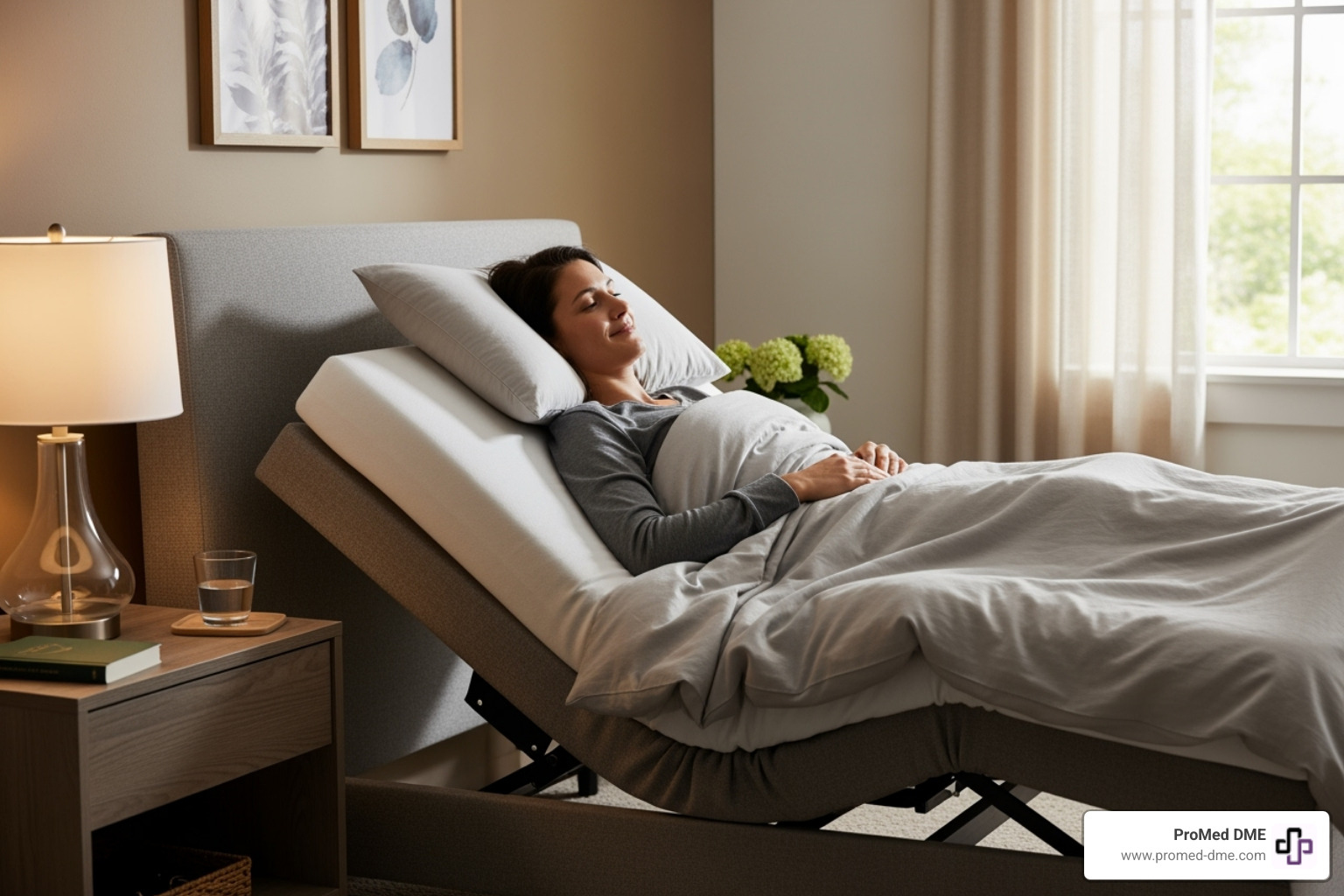Medicare's Durable Medical Equipment – Approved, Covered, and Ready to Roll
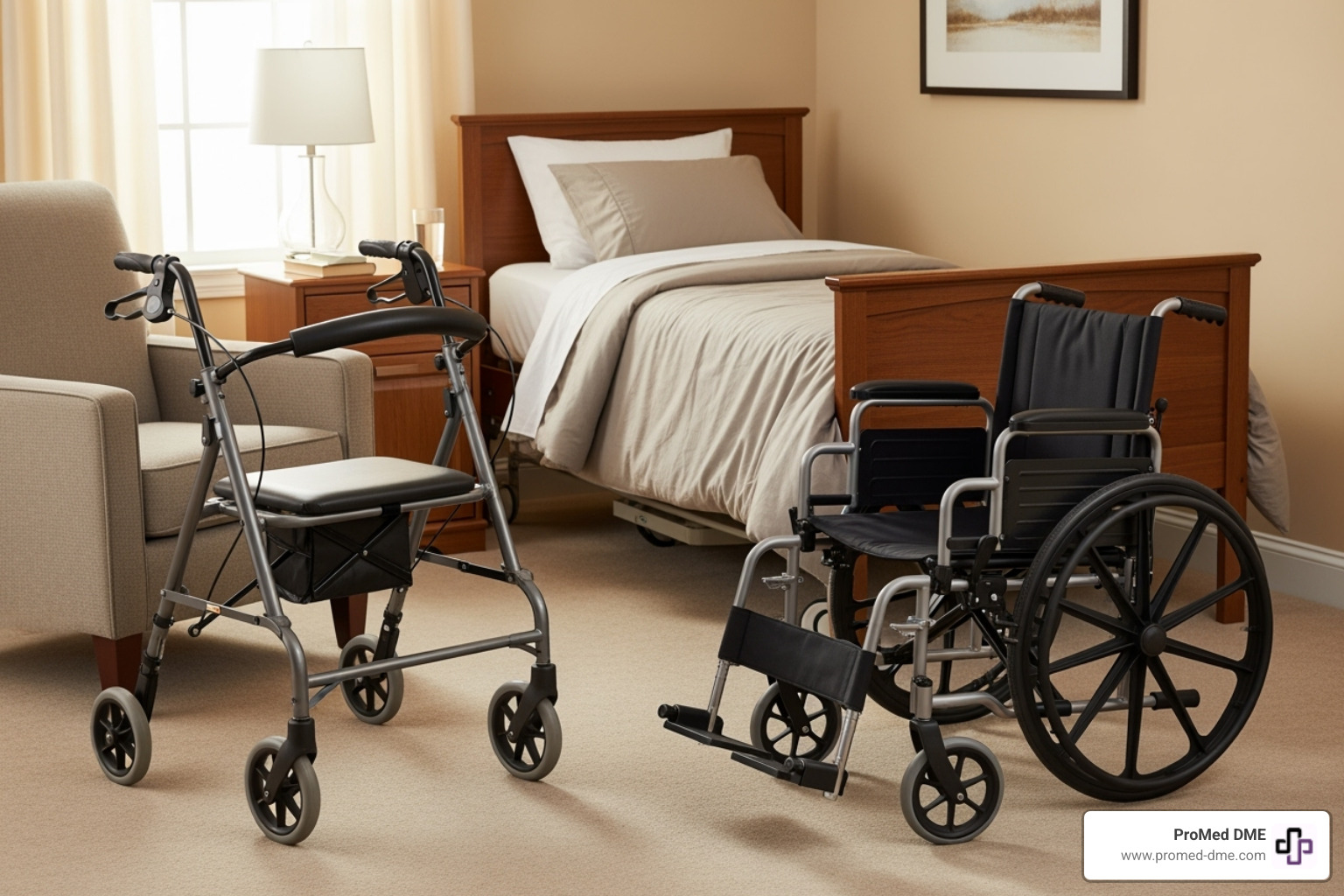
Why Understanding Medicare Approved Durable Medical Equipment Matters
Medicare approved durable medical equipment (DME) helps millions of Americans maintain their independence at home. If you need equipment covered by Medicare, here's what you should know:
Quick Answer: Medicare-Approved DME includes:
- Mobility aids - Walkers, canes, wheelchairs, scooters
- Home medical equipment - Hospital beds, patient lifts, commode chairs
- Breathing support - CPAP machines, nebulizers, oxygen equipment
- Monitoring devices - Blood sugar monitors and test strips
- Treatment equipment - Infusion pumps, pressure-reducing surfaces
Medicare Part B covers 80% of approved costs after you meet your deductible. You pay 20% coinsurance when using Medicare-approved suppliers.
Understanding Medicare's DME benefit is key to managing your health at home. The key is knowing what qualifies, how to get it, and what it costs.
Medical necessity is the foundation of all DME coverage. Your doctor must prescribe equipment for home use that serves a medical purpose. Items must be durable enough to last at least three years and generally not useful to someone who isn't sick or injured.
This guide walks you through everything, from Medicare's official criteria to the step-by-step process of getting your equipment approved.
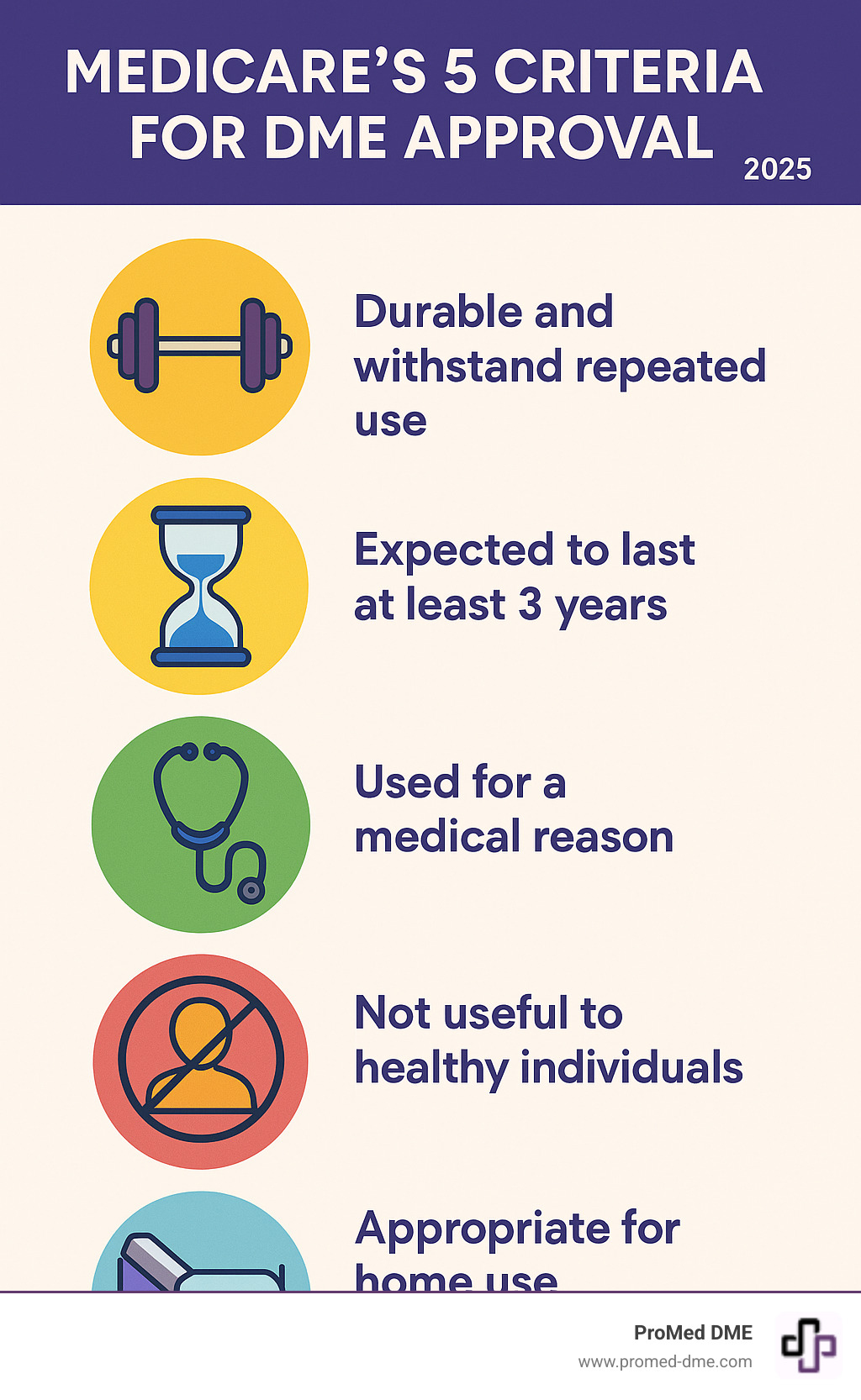
Medicare approved durable medical equipment terminology:
What Qualifies as Durable Medical Equipment (DME) Under Medicare?
Medicare has specific requirements for what qualifies as durable medical equipment (DME). These guidelines ensure you get the necessary medical equipment while keeping costs reasonable.
Medicare's definition (42 CFR 414.202) states that DME must serve a medical purpose, be durable, be appropriate for home use, and generally not be useful to someone who isn't sick or injured.
The key difference between reusable medical equipment and medical supplies is durability. A reusable wheelchair is DME, while disposable gloves are medical supplies. Medicare covers them differently.
Medical supplies like bandages and syringes are typically single-use and don't meet the 3-year lifespan requirement for DME, which must withstand repeated use.
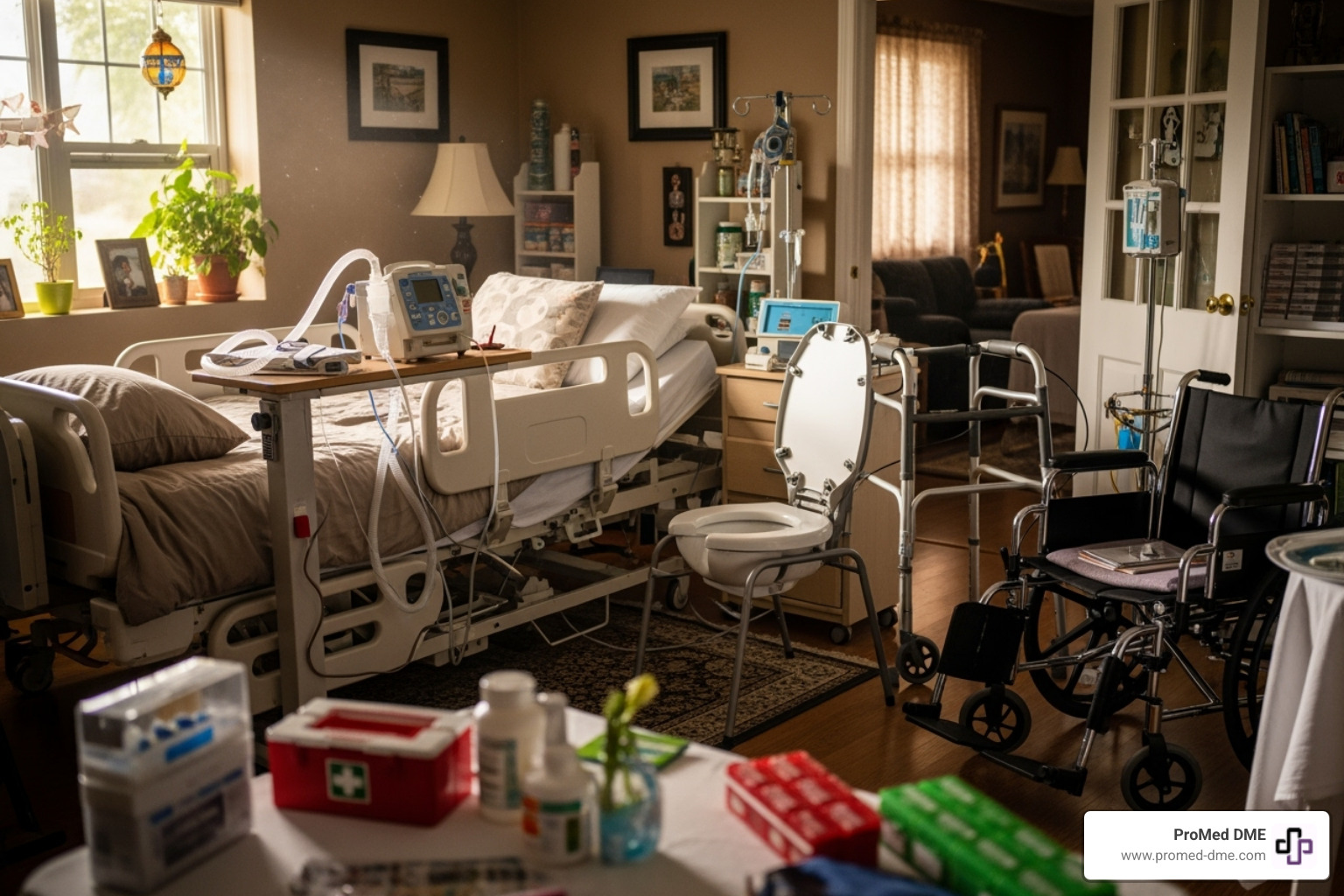
Medicare's 5 Official Criteria for DME
For any piece of equipment to qualify as Medicare approved durable medical equipment, it must meet all five of these requirements.
Durable and built to last means the equipment can withstand repeated use. A hospital bed is durable; a disposable heating pad is not.
Expected to last at least 3 years is Medicare's standard for value. For equipment classified after January 1, 2012, Medicare expects a reasonable useful lifetime of at least three years.
Used for a medical reason is a critical criterion. The equipment's primary purpose must be to treat a medical condition. A CPAP machine for sleep apnea is medical; a massage chair for comfort is not.
Not useful to someone who isn't sick or injured distinguishes medical equipment from household items. A walker helps with mobility challenges, while a regular chair serves everyone.
Appropriate for use in the home means the equipment is designed to work safely in a home setting, which can include an assisted living facility. It does not typically include hospitals providing Medicare-covered care.
You can find all the official details at Official Medicare DME Coverage Information.
What's Not Considered DME?
Knowing what Medicare doesn't cover as DME can prevent surprises. Exclusions typically include convenience items, home modifications, and disposable supplies.
Convenience items are not primarily medical. Air conditioners, most humidifiers, and comfort items like special pillows typically don't qualify.
Home modifications like grab bars, ramps, and stair lifts are considered structural changes to your property, not medical equipment.
Single-use items and disposable supplies don't meet the durability requirement. This includes most bandages, gauze, and incontinence products.
Items that are not primarily for home use or that healthy people would find equally useful also do not qualify for coverage.
Your Guide to Medicare Approved Durable Medical Equipment Coverage
Medicare Part B (Medical Insurance) covers medically necessary DME, making these devices accessible to millions. Here's how it works.
Medicare Part B uses an "80/20 rule." After you meet your annual Part B deductible, Medicare pays 80% of the Medicare-approved amount for your equipment, and you are responsible for the remaining 20% coinsurance.
To save money, always use a supplier that accepts "assignment." This means they agree to accept Medicare's approved amount as full payment. If they don't, they can charge you more than the 20% coinsurance.
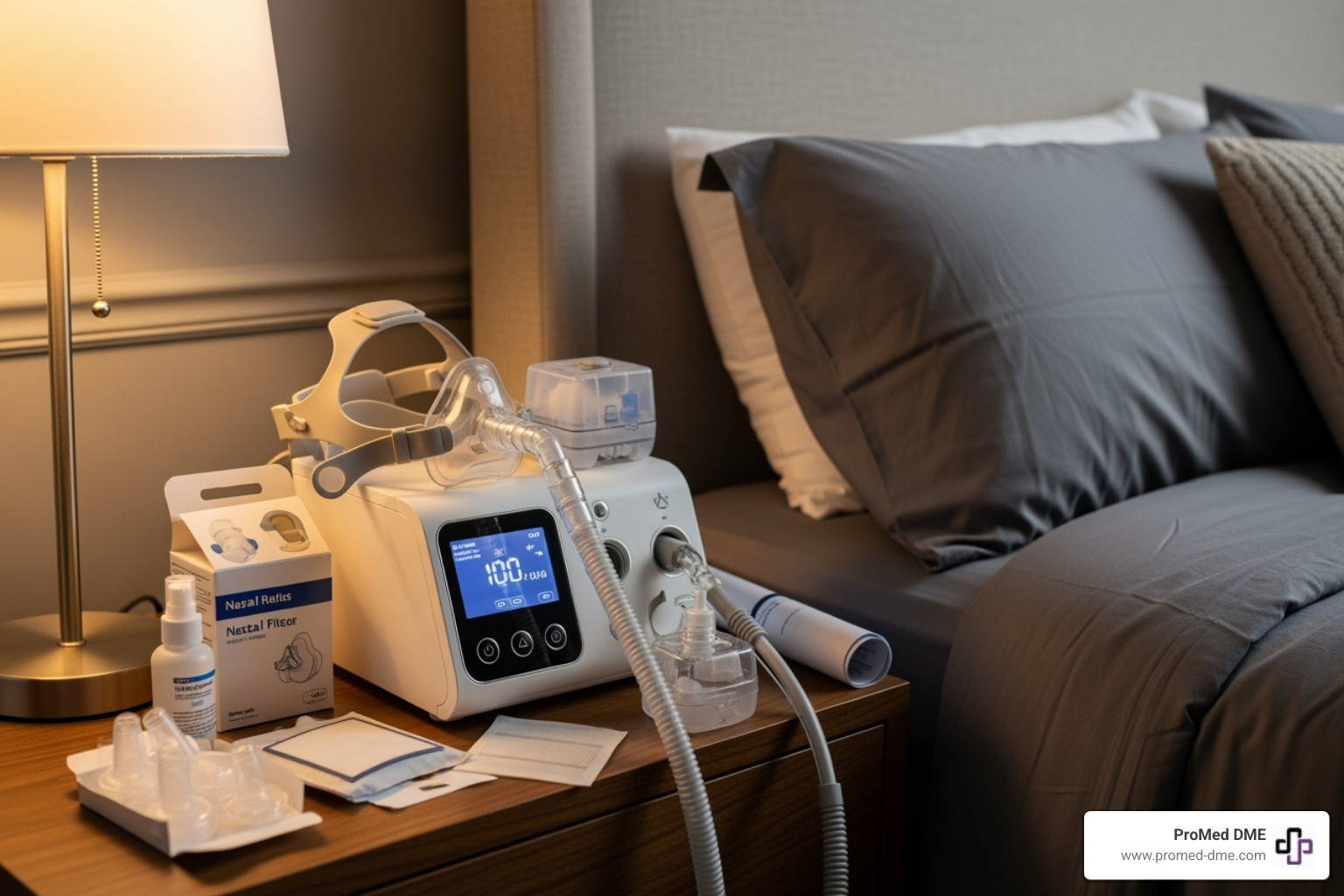
Commonly Covered DME Items
When it comes to Medicare approved durable medical equipment, you'll find coverage for a wide range of items that improve your quality of life at home. Common categories include:
- Mobility aids: Walkers, canes, crutches, manual and power wheelchairs, and mobility scooters.
- Home medical equipment: Hospital beds, patient lifts, and commode chairs.
- Respiratory aids: CPAP devices, nebulizers, and oxygen equipment.
- Monitoring supplies: Blood sugar monitors and test strips.
- Treatment equipment: Infusion pumps.
Each item serves a specific purpose in managing health conditions and maintaining independence at home.
How Medicare Pays: Renting vs. Buying
Medicare has a system for paying for DME that balances cost-effectiveness with your needs, deciding whether you rent or buy.
For inexpensive or routinely purchased items (like canes or blood sugar monitors), Medicare typically pays for you to buy them.
For expensive equipment like hospital beds and wheelchairs (capped rental items), Medicare rents the item for up to 13 continuous months. After 13 months of rental payments, ownership of the equipment transfers to you.
Oxygen equipment has unique rules. Medicare pays for rental for up to 36 months. Afterward, the supplier must continue providing the equipment and supplies for another 24 months (a 5-year total) at no further rental cost to you, as long as it's medically necessary. This ensures you have reliable access to this life-sustaining equipment.
The 4-Step Process to Get Your DME
Getting your Medicare approved durable medical equipment is a manageable, four-step process. While Medicare has specific requirements, your doctor and DME supplier do most of the work. Your role is to ensure you're working with Medicare-approved providers.
Step 1: Get a Prescription from Your Doctor
Everything starts with a prescription from your doctor. This medical documentation is required by Medicare to prove the equipment serves a medical purpose.
Your doctor will conduct a medical evaluation to assess your condition. The written order must be detailed, explaining why you need the equipment, the specific type required, and the expected duration of use.
Some equipment requires a Certificate of Medical Necessity (CMN), a detailed form about your medical history and functional needs.
For power wheelchairs and scooters, a face-to-face examination with your doctor within the six months before the prescription is written is required.

Step 2: Find a Medicare-Approved Supplier
With your prescription, you must find a supplier enrolled in Medicare with a valid Medicare supplier number.
Ask potential suppliers if they accept assignment. This means they accept Medicare's approved amount as full payment, and you only pay your 20% coinsurance and any unmet deductible. If they don't accept assignment, they can charge you more.
Participating suppliers always accept assignment. Non-participating suppliers may not, so always ask upfront.
Use Medicare's official online tool to Find Medicare-approved suppliers near you or call 1-800-MEDICARE. When you contact suppliers, ask if they are enrolled with Medicare, accept assignment, and will handle billing Medicare for you.
Step 3: Complete Prior Authorization (If Required)
Some high-cost items like power wheelchairs and certain scooters require prior authorization, which is Medicare's pre-approval of coverage.
Your supplier handles the prior authorization request, submitting all necessary documentation to Medicare. During the approval process, Medicare reviews your documentation to confirm medical necessity for home use.
If approved, you get the equipment. If denied, you can appeal, often by providing more detailed documentation from your doctor.
Step 4: Receive Your Equipment and Training
Once approved, your Medicare approved durable medical equipment will be delivered.
- Delivery and setup: Your supplier should professionally deliver and set up the equipment, especially larger items, and ensure it works correctly.
- Instructions for use: The supplier must provide clear instructions on how to use the equipment safely and effectively. Ask questions until you feel confident.
- Safety guidelines: Your supplier should review all safety considerations and provide written instructions.
- Ongoing supplier support: A good supplier provides support after delivery. At ProMed DME, we offer ongoing support to help you get the most from your equipment.
Special Rules for Maintenance, Repairs, and High-Need Items
Once you have your Medicare approved durable medical equipment, you need to understand the rules for maintenance and repairs. The key concept is "reasonable useful lifetime," which Medicare defines as 5 years. This affects replacements and repairs.
Maintenance and Repairs for Your DME
Who pays for maintenance and repairs depends on whether you rent or own the equipment.
If you're renting your equipment, the supplier is responsible for all maintenance and repairs during the rental period.
If you own your equipment, you are responsible for its upkeep. However, Medicare Part B helps with repair costs. After your deductible, Medicare pays 80% of the approved amount for repairs, and you pay 20%. You must use a Medicare-enrolled DME repair service.
Special Considerations for Oxygen Equipment
Oxygen equipment has unique rules due to its life-sustaining nature.
After the 36-month rental cap, your supplier has a 5-year total obligation to provide your oxygen equipment and supplies at no further rental cost, as long as you have a medical need.
The supplier must ensure continuous service and provide equipment that meets any changes in your prescription.
Regarding travel with oxygen, Medicare covers home use but generally not air travel. You must arrange for an airline-approved portable oxygen concentrator (POC) for flights. For road trips, your supplier can help coordinate delivery.
If medically necessary for mobility at home, your supplier must provide a portable oxygen concentrator as part of your coverage.
Special Considerations for Power Wheelchairs & Scooters
Power wheelchairs and scooters have some of the strictest rules for Medicare approved durable medical equipment.
The key rule is the strict in-home use requirement. Medicare covers these items only if needed for mobility inside your home, which must be able to accommodate the device.
Your doctor must provide detailed medical necessity documentation showing you cannot use a cane, walker, or manual wheelchair and require the power device for daily activities at home.
The prior authorization process is handled by your supplier, who submits all documentation to Medicare for review.
For more detailed information about these coverage rules, check out Medicare's official wheelchair and scooter coverage page.
Original Medicare vs. Medicare Advantage for DME Coverage
Your Medicare approved durable medical equipment coverage, costs, and access to suppliers can differ depending on whether you have Original Medicare or a Medicare Advantage Plan. While both must cover medically necessary DME, the rules and costs vary.
How Original Medicare (Part B) Covers DME
With Original Medicare, your DME coverage has several advantages:
- Freedom to choose any Medicare-approved supplier: You can use any Medicare-enrolled supplier in the U.S. that accepts assignment, offering great flexibility.
- Standard 20% coinsurance: After your annual Part B deductible, you pay a predictable 20% of the Medicare-approved amount for DME.
This approach offers predictability and control over your healthcare choices.
How Medicare Advantage (Part C) Covers DME
Medicare Advantage (Part C) Plans, run by private insurers, also cover DME but have different rules.
- Must cover everything Original Medicare does: By law, Advantage Plans must offer at least the same level of DME coverage as Original Medicare.
- May have provider networks: Many plans (HMOs/PPOs) require you to use in-network suppliers to get the lowest costs. Going out-of-network can be more expensive.
- Different cost-sharing: Plans may use flat copayments (e.g., $50 for a walker) instead of 20% coinsurance, which can sometimes be cheaper.
- Potential for additional benefits: Some plans offer extra benefits like fitness programs or vision coverage.
Always check with your specific Medicare Advantage Plan to understand its rules for DME, including networks, costs, and prior authorization requirements.
At ProMed DME, we work with most insurance plans, including Original Medicare and Medicare Advantage, to minimize your costs. We can verify your coverage and explain your expenses upfront.
Frequently Asked Questions about Medicare Approved Durable Medical Equipment
Here are answers to common questions about Medicare approved durable medical equipment.
How often can Medicare replace my durable medical equipment?
Medicare replaces equipment based on its "reasonable useful lifetime," which is generally 5 years. After 5 years, if your equipment is worn out, Medicare will typically cover a replacement. You will need a new doctor's prescription confirming your continued medical need.
If your medical condition changes significantly, Medicare may cover a replacement before the 5-year mark. For example, if you now need a power wheelchair instead of a walker, Medicare may cover the upgrade with proper medical documentation.
In all cases, doctor's documentation is required to justify the replacement.
Who is responsible for repairing my Medicare approved durable medical equipment?
Responsibility for repairs depends on whether you rent or own the equipment.
- If you're renting your DME, the supplier is responsible for all maintenance and repairs during the rental period.
- If you own your equipment, you are responsible for arranging repairs. However, Medicare Part B typically pays 80% of the approved cost for repairs to owned equipment after your deductible. You pay 20% and must use a Medicare-enrolled repair service.
What happens if my DME is lost or damaged in a disaster?
Medicare has special rules for replacing DME that is lost or damaged in a natural disaster. These rules apply if you are in an area officially declared a disaster or emergency area.
Medicare may cover the cost of replacement before the 5-year lifetime is up and may also cover a temporary loaner. Contact your DME supplier first. They can guide you through the replacement process. At ProMed DME, we are here to help you steer these stressful situations.
If you have a Medicare Advantage Plan, contact your plan directly, as their procedures may differ from Original Medicare's. Medicare's system is designed to help you replace essential equipment quickly after a disaster.
Conclusion
Navigating Medicare for your Medicare approved durable medical equipment doesn't have to be overwhelming. This guide provides a roadmap to understanding what Medicare covers and how to access it.
- Medical necessity is the foundation. A doctor's prescription for a clear medical need is the first step to getting coverage for any DME.
- Choose your supplier wisely. A Medicare-enrolled supplier who accepts assignment protects you from unexpected costs, ensuring you only pay your 20% coinsurance after the deductible.
- Know your plan's specifics. Original Medicare offers freedom of choice in suppliers, while Medicare Advantage plans may have networks and different cost structures. Understanding your plan is key.
The four-step process—prescription, supplier selection, prior authorization, and delivery with training—ensures you receive appropriate equipment safely.
At ProMed DME, we simplify this process for you. We handle the paperwork, answer your questions, offer free shipping nationwide, and work with most insurance plans to minimize your costs. Our dedicated nurse is always available to help.
The right Medicare approved durable medical equipment is crucial for your independence and quality of life. Don't let confusion about coverage prevent you from getting the support you need.
Related Resources & Articles
Stay informed with our informative blog posts.
Discover the ProMed Advantage
& Try Our Products
We offer free shipping and legendary customer service to ensure you receive the
best DME products for your needs.



